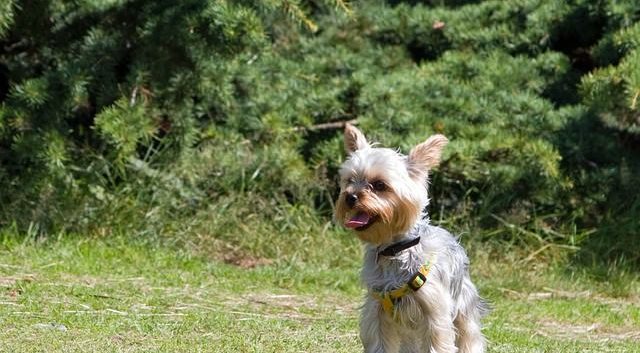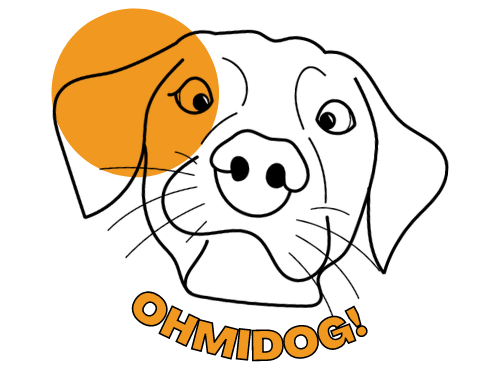
5 Ways to Train a Yorkie to Come
The ‘come’ command is one of the most important commands you should teach your Yorkie. Mastering this command can not only get your Yorkie out of a difficult situation, but it could very well save its life.
So, are you looking for the best methods on how to train a Yorkie to come when called? If so, then you’ll love the proven methods listed below.

When should you train a Yorkie the come command?
The come command should be taught only after your Yorkie is trained to use a lead or leash and collar.
Do not attempt to put a collar and leash on your Yorkie and then try to immediately try to teach them to come. They will be completely distracted by the collar and will not be able to deal with so many things at once.
Things to consider before training your Yorkie
For teaching the come command, you should use a lead or leash that is at least 10 or 15 feet long. You don’t want a lead so short that your Yorkie is basically already within arms reach.
As with all training sessions, choose a time and location where distractions are minimal. Remember that dogs are creatures of habit. Do not try to train during a time when your Yorkie would normally be napping. Refer to our training page for more general training advice.
How to train your Yorkie to come?
1. Start slow and work your way up
Start by assuming a crouched position on one knee several feet from the puppy. Gently and steadily pull the puppy toward you with the leash. As soon as he reaches you, you should give him praise by rubbing him across the shoulders once or twice. Do not overdo the praise as Yorkies have very short attention spans and will soon become lost in the fun of the praise and may forget what they did to earn it in the first place.
2. Keep training sessions short (no longer than 10 minutes)
Keep your training session short–10 minutes a day is reasonable. This is long enough to guide the puppy to you several times using the leash or lead. After a few sessions–which should be held daily, or as close as possible to daily–your puppy will come to you at the lightest tug on the leash or lead. As mentioned above, Yorkie puppies have short attention spans. If you try to prolong a training session, your Yorkie will simply stop paying attention and stop learning. At this point, further training for this session will probably do more harm than good.
3. When to use the ‘Come’ command
Don’t start trying to add the verbal command “Come!” until the puppy comes to you every time in response to a light tug on the leash. You might consider the verbal command “advanced” training. Remember that dogs don’t understand human speech, but only associate a sound with an action. Trying to teach them the sound that is supposed to cause an action on their part before they understand what the action is all about is needlessly confusing.
A few sessions into the training, the puppy should be responding to a light tug on the leash by starting to you immediately. At this point, the puppy has recognized that when the leash is pulled, you expect him to come to you, which is exactly what we want him to understand. Now that he understands the basic idea of coming to you, add in the verbal “Come!” command. As you lightly tug the lead to get the puppy headed toward you, say the word “Come”. You should not raise your voice or say the word more than once. Simply say “Come” in a level voice as you give the lead or leash a gentle tug.
A few sessions of of this process and the puppy will associate the word “come” with the action of coming to you. When this happens, the cord will no longer be the only trigger for the action of coming to you. You will be able to tell by simply by issuing the verbal command without the tug of the lead or leash. Do not try issuing the verbal command without the tug until you are reasonably certain that the puppy understands. You don’t want to let him think that you can say “Come” and that he can choose to ignore you.
4. When can I take my dog off leash
Once your Yorkie is responding to the verbal “Come” command without a tug on the lead, the lead may be removed. The training is not yet finished! You must still have several sessions where you work without a lead to make certain that your dog understands. Obviously, you must have these sessions in a safe environment where the puppy cannot get away from you, since you are working without a lead.
The puppy may well try to challenge your right to make him come to you after you remove the lead. If the puppy does not respond to the “Come” command consistently after the lead is removed, you will need to go back to using the lead for a few more sessions.
5. Consistency is the key to success
Be very consistent with the verbal commands that you teach your puppy. Don’t start by saying “come”, and then decide that you like “here” better. Make sure that all family members use the same verbal command. Also, don’t let other family members try to give the command before the puppy is properly trained–this can lead to confusion on the part of the puppy as to what is expected of him.
On a related note, don’t try to use the verbal command at all outside a training session before the puppy is trained unless you are in complete control of the puppy. Yelling “COME” to a half-trained Yorkie puppy as he goes running toward the neighbor’s cat is going to get you ignored and teach the puppy that it’s okay to ignore you.

